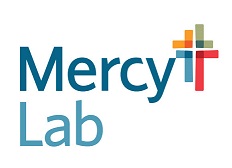| A B C D E F G H I J K L M N O P Q R S T U V W X Y Z # |
FUNGUS CULTURE, OTHER
Test CodeLAB1012
Quest Code
4553
CPT Codes
87102, 87206
Includes
Fungal smear and culture
If culture is positive, then identification will be performed at an additional charge (CPT code(s):
87106, 87107, 87140, 87143, 87149 or 87158).
If the organism cannot be identified by the original method or if there are multiple organisms,
identification by DNA sequencing may be performed at an additional charge (CPT code(s): (CPT
code(s): 87153).
If culture is positive, then identification will be performed at an additional charge (CPT code(s):
87106, 87107, 87140, 87143, 87149 or 87158).
If the organism cannot be identified by the original method or if there are multiple organisms,
identification by DNA sequencing may be performed at an additional charge (CPT code(s): (CPT
code(s): 87153).
Preferred Specimen
Body fluids, CSF, and eye fluid (vitreous) specimens in a sterile, leak-proof container.
Ear,oral, throat, nose, nasopharyngeal, wound or genital specimen collected by Eswab and transported in a liquid or gel transport medium.
Ocular specimens collected in a sterile, leak-proof container, or transport Eswabs in liquid or gel transport medium.
Sputum, bronchoalveolar lavage (BAL) fluid, brushing, washing or aspirate collected in any sterile leak-proof container.
Tissue or biopsy specimen submitted in a sterile, leak- proof container.
First morning, clean catch midstream urine catheter collected, surgically collected urine, or after prostatic massage.
Ear,oral, throat, nose, nasopharyngeal, wound or genital specimen collected by Eswab and transported in a liquid or gel transport medium.
Ocular specimens collected in a sterile, leak-proof container, or transport Eswabs in liquid or gel transport medium.
Sputum, bronchoalveolar lavage (BAL) fluid, brushing, washing or aspirate collected in any sterile leak-proof container.
Tissue or biopsy specimen submitted in a sterile, leak- proof container.
First morning, clean catch midstream urine catheter collected, surgically collected urine, or after prostatic massage.
Minimum Volume
1 mL abscess • 1 swab abscess, wound exudates, aspirates or lesion material • 1 mL body fluids/CSF • 1 swab ear, oral, throat, nose, nasopharyngeal, wound, or genital specimen • Any amount of eye/corneal scrapings • 1 mL sputum, lower respiratory or BAL fluid, brushing, washing or aspirate • Any amount tissue/biopsy • 5 mL of urine
Other Acceptable Specimens
Any body fluid or specimens collected by Eswabs • Ocular scrapings placed directly onto media and a clean microscope slide • Any respiratory sample • Any tissue sample
Instructions
Respiratory: If H. capsulatum is suspected, transport at room temperature
Transport Container
Sterile container. Add a small amount of saline to biopsy and soft tissue specimens. Transport Eswabs in liquid or gel transport medium. <br /> Corneal specimens may be directly inoculated onto media, sealed tightly and submitted at room temperature.
Transport Temperature
Raw specimens: Refrigerated (cold packs)
Swab specimens in transport medium: Room temperature
*If H. capsulatum is suspected transport at room temperature
Specimen Stability
Sterile leak-proof container
Room temperature: 72 hours
Refrigerated: 72 hours
Frozen: Unacceptable
Swabs
Room temperature: 72 hours
Refrigerated: Unacceptable
Frozen: Unacceptable
Pre-inoculated agar media
Room temperature: 72 hours
Refrigerated: 72 hours
Frozen: Unacceptable
Lower respiratory
Room temperature: Unacceptable
Refrigerated: 72 hours
Frozen: Unacceptable
Urine
Room temperature: Unacceptable
Refrigerated: 48 hours
Frozen: Unacceptable
Room temperature: 72 hours
Refrigerated: 72 hours
Frozen: Unacceptable
Swabs
Room temperature: 72 hours
Refrigerated: Unacceptable
Frozen: Unacceptable
Pre-inoculated agar media
Room temperature: 72 hours
Refrigerated: 72 hours
Frozen: Unacceptable
Lower respiratory
Room temperature: Unacceptable
Refrigerated: 72 hours
Frozen: Unacceptable
Urine
Room temperature: Unacceptable
Refrigerated: 48 hours
Frozen: Unacceptable
Reject Criteria (Eg, hemolysis? Lipemia? Thaw/Other?)
Specimens transported in alcohol or formalin • Specimens in EDTA, citrate or yellow-top ACD vacutainer tubes • 24-hour urine collections • 24 hour-sputum collections • Non-sterile containers • Viral transport medium • Stool specimens • Hair, skin, nails
Methodology
Microscopic Exam • Culture • Isolation and Identification
Setup Schedule
Day shift Mon-Fri
Report Available
4 weeks
Reference Range
See Laboratory Report
Clinical Significance
The prompt detection of fungus in clinical samples is extremely important for in-patient management. Disseminated fungal infections are increasing in prevalence, and fungus cultures are essential for the isolation and subsequent identification of the causative agents.
Performing Laboratory
| Quest Diagnostics-Lenexa |
| 10101 Renner Blvd |
| Lenexa, KS 66219-9752 |
Last Updated: March 31, 2023

